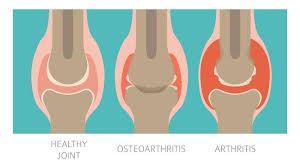-
Feed de Notícias
- EXPLORAR
-
Páginas
-
Grupos
-
Eventos
-
Blogs
Understanding the Differences Between Osteoarthritis (OA) and Rheumatoid Arthritis (RA)

Arthritis is a common term for conditions that cause joint pain and inflammation, but not all types of arthritis are the same. The two most prevalent forms are Osteoarthritis (OA) and Rheumatoid Arthritis (RA). While both affect the joints, their causes, symptoms, and treatments are quite different. Understanding the distinction between the two is key to effective management and maintaining quality of life.
Carticlas tablets are a cutting-edge dietary supplement formulated to promote joint health, reduce inflammation, and support overall well-being. They are designed to address the common issues associated with aging, high physical activity, and other factors that affect joint and bone health.
What is Osteoarthritis (OA)?
Osteoarthritis is a degenerative joint disease and the most common form of arthritis. It typically occurs due to wear and tear of the cartilage — the protective tissue at the ends of bones. Over time, this cartilage breaks down, causing bones to rub against each other, leading to pain, swelling, and stiffness.
OA most commonly affects joints that bear weight, such as the knees, hips, spine, and hands. It usually develops slowly and becomes more noticeable with age. Factors such as aging, joint injury, obesity, and genetics can increase the risk of OA.
What is Rheumatoid Arthritis (RA)?
Rheumatoid Arthritis is an autoimmune disorder, meaning the body’s immune system mistakenly attacks its own tissues. In RA, the immune system targets the synovium, the lining of the membranes that surround the joints. This leads to inflammation, pain, swelling, and eventually joint deformity and bone erosion if not treated.
RA can affect multiple joints on both sides of the body, such as the hands, wrists, and knees, and it may also involve systemic symptoms like fatigue, fever, and loss of appetite. Unlike OA, RA can develop at any age and is more common in women than men.
Key Differences Between OA and RA
| Feature | Osteoarthritis (OA) | Rheumatoid Arthritis (RA) |
|---|---|---|
| Cause | Wear and tear of cartilage | Autoimmune attack on joint lining |
| Onset | Gradual, with aging or overuse | Can be sudden, often in middle age |
| Joints Affected | Weight-bearing joints (knees, hips) | Symmetrical joints (hands, wrists, knees) |
| Morning Stiffness | Lasts less than 30 minutes | Lasts more than 30 minutes |
| Inflammation | Mild to moderate | Significant and chronic |
| Systemic Symptoms | Rare | Common (fatigue, fever, malaise) |
Diagnosis
Diagnosing arthritis involves clinical examination, medical history, and diagnostic tools such as X-rays, MRI scans, and blood tests. In OA, imaging may show cartilage loss and bone spurs. RA diagnosis often includes blood tests to detect rheumatoid factor (RF), anti-CCP antibodies, and markers of inflammation like CRP or ESR.
Treatment Options
While there is no cure for either OA or RA, a combination of treatments can manage symptoms and improve function.
For Osteoarthritis:
-
Pain relievers like acetaminophen or NSAIDs
-
Physical therapy to improve strength and flexibility
-
Weight management to reduce joint stress
-
Joint injections (e.g., corticosteroids or hyaluronic acid)
-
Surgery (e.g., joint replacement) in severe cases
For Rheumatoid Arthritis:
-
Disease-modifying antirheumatic drugs (DMARDs) to slow disease progression
-
Biologics targeting specific immune responses
-
Corticosteroids to reduce inflammation
-
Lifestyle changes including diet, exercise, and stress reduction
Living with Arthritis
Both OA and RA can impact daily life, but with early diagnosis, proper treatment, and lifestyle adjustments, individuals can manage their symptoms effectively. Regular exercise, a balanced diet rich in anti-inflammatory foods, and supportive therapies such as occupational therapy or counseling can greatly improve quality of life.
Final Thoughts
Though OA and RA share some similarities, they are fundamentally different diseases. OA is more mechanical and age-related, while RA involves the immune system and can affect the whole body. Knowing which type you have is critical to finding the right treatment and managing the condition effectively. If you experience joint pain, stiffness, or swelling, consult a healthcare provider for proper evaluation and guidance.
- Art
- Causes
- Crafts
- Dance
- Drinks
- Film
- Fitness
- Food
- Jogos
- Gardening
- Health
- Início
- Literature
- Music
- Networking
- Outro
- Party
- Religion
- Shopping
- Sports
- Theater
- Wellness


